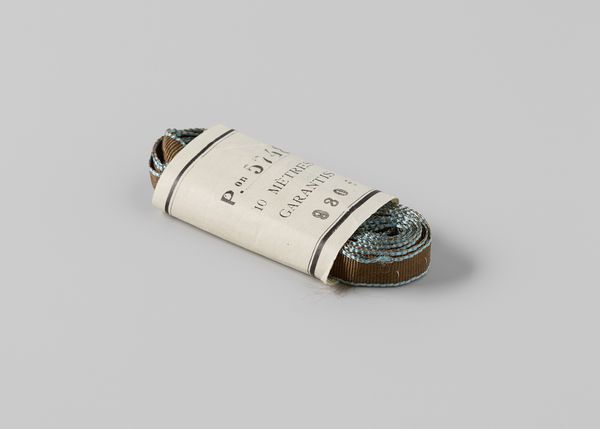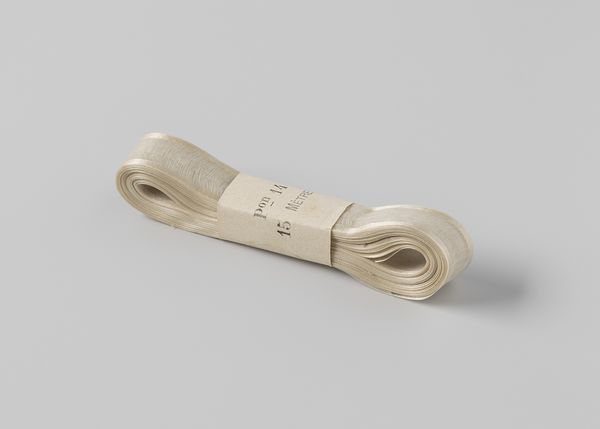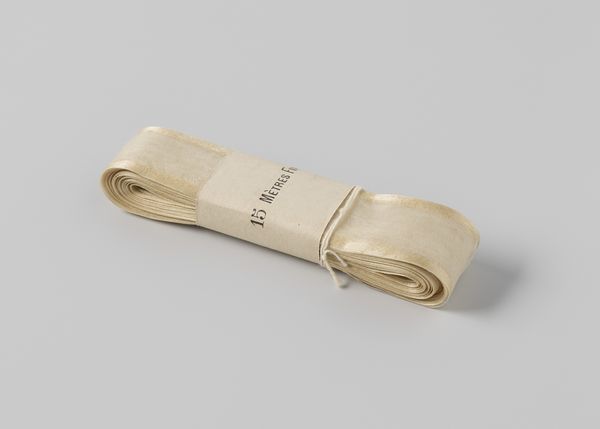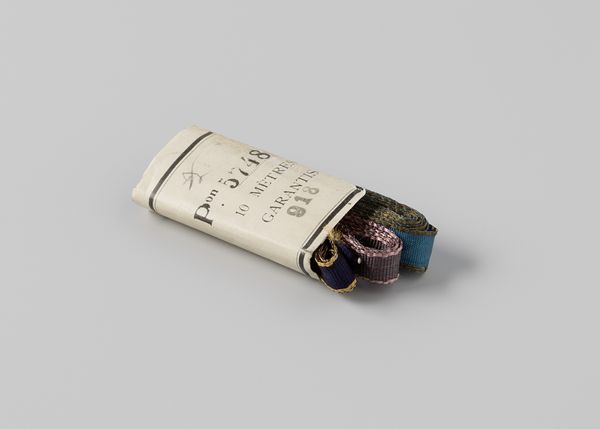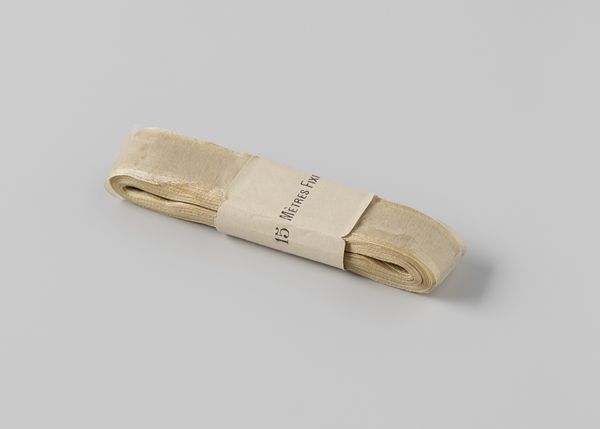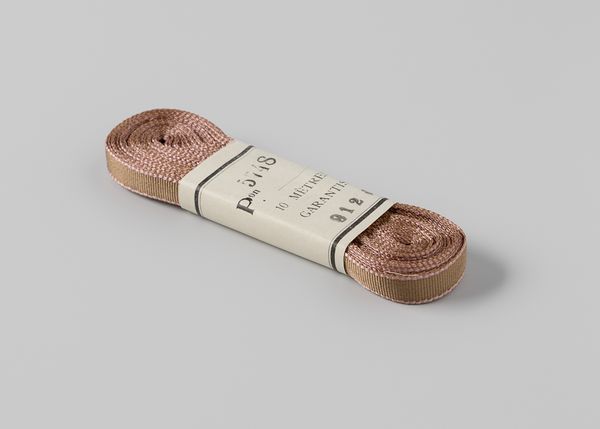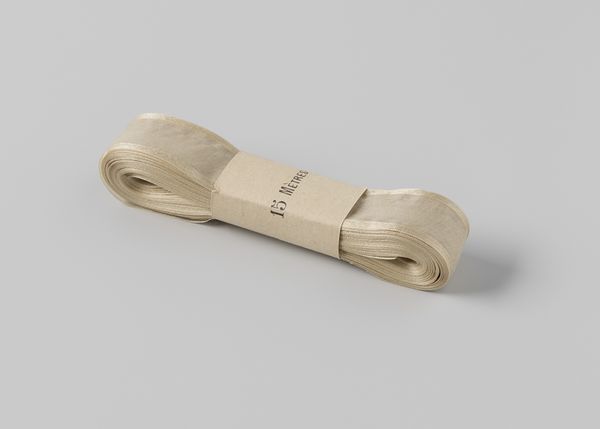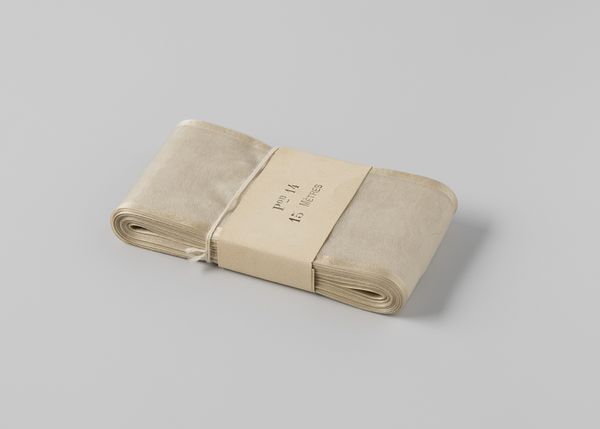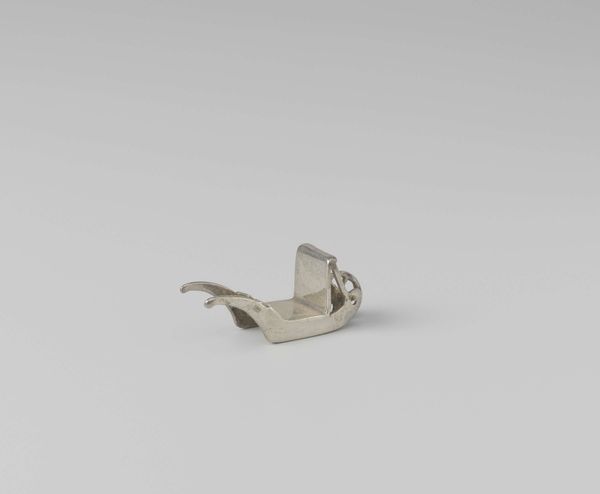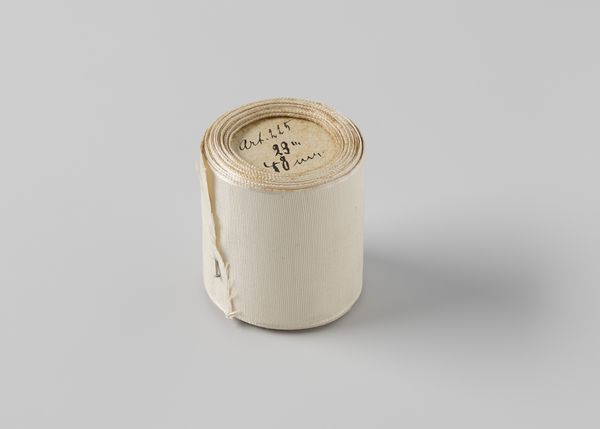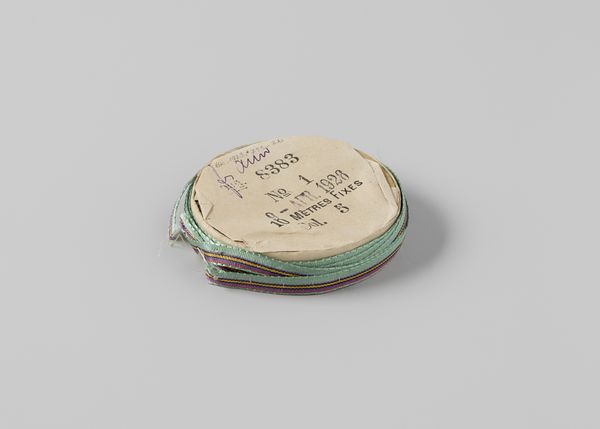
textile, photography
#
still-life-photography
#
textile
#
photography
Dimensions: width 0.9 cm, height 0.9 cm, width 3 cm, length 10.5 cm
Copyright: Rijks Museum: Open Domain
Curator: Here we have a photographic still life from between 1890 and 1935. Its title is “Lint, blauw aan beide zijden zalmrose afgebiesd,” which translates to “Ribbon, blue, bordered on both sides with salmon pink." Editor: My first thought is how muted the color palette is, almost as if it were already fading. The ribbon, neatly packaged, appears to carry the weight of past times, despite being a relatively banal object. Curator: Precisely! Schnitzler, the photographer, seems interested in the interplay between the rough texture of the ribbon and its soft hues. The light enhances every slight imperfection. Editor: What is so compelling here is its simultaneous anonymity and inherent value. Ribbons are used for myriad purposes – decoration, memorialization, even simple utility. The colors themselves take on meaning from these varied contexts, signifying anything from baby showers to national colors. Curator: Yes, the composition directs our gaze from the fraying edge of the ribbon to the contained, coiled interior, emphasizing its structure and, you could say, its eventual unraveling. The packaging introduces an intriguing plane into what could otherwise be seen as a strictly bidimensional form. Editor: Indeed, and consider the history of textiles: from rudimentary cloth to elaborate tapestries, ribbon itself represents civilization’s progress in artistry, fashion, and commerce, acting as a potent symbol of human creation. The photograph captures a still life that has cultural narratives in every winding thread. Curator: The muted palette, of course, affects how we perceive depth within this composition. By utilizing only tertiary colors, we are left unsure of a specific vantage, contributing to a subtle level of dissonance within this still life. Editor: Reflecting on this image, I can't help but feel a sense of how something so simple becomes so layered when approached as something more than mere material. Curator: Indeed, Schnitzler provokes us to reflect on structure itself, how components assemble to construct deeper meaning from something apparently mundane.
Comments
No comments
Be the first to comment and join the conversation on the ultimate creative platform.
